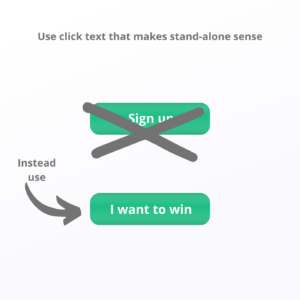We all know what a bad customer service experience feels like: You take the afternoon off and treat yourself to a trip to the spa. You are feeling totally relaxed after your amazing massage.  Ahhh!
Ahhh!
But then the receptionist ignores you when you go up to the desk to pay and continues her conversation on what is clearly a personal call. That bad experience totally erased the relaxed feeling you had. In fact, now you are feeling more irritable than before you showed up at the spa.
As a small business owner giving your customer a bad experience is the stuff of nightmares, particularly in the age of social media (80% of customer service Tweets are negative or critical). So how can you put some of these nightmarish thoughts to bed?
First, let’s discuss why bad customer service hurts so much.
You don’t need a degree in psychology to know that respect is a huge factor. It’s simple: customers want and deserve respect. If your staff treats customers badly, it might be time to look at the culture of your company. Is respecting others a priority?
Feeling disrespected is obviously painful, but this doesn’t fully explain the intensity of a bad customer service experience. Even if you have had years of decent experiences with a company, one bad experience can overshadow all of it and lead to kvetching about the company to everyone you meet online or off.
Psychologists explain it in terms of negativity dominance theory. This is the hypothesis that negative events have a greater effect on your psychological state than positive or neutral events. In other words, even if you had an amazing massage, the rude receptionist makes you feel lousy. The nature of the human experience, according to psychologists, is that we have a better memory for the bad than for the good.
Great. Now what’s the solution?
One obvious solution: don’t give your customers negative experiences. But of course, mistakes happen. And especially if you are scaling up, you can expect some growing pains. Here, the best thing to do is be reasonable about fixing the situation. For more advice about best practices here (and yes, a bit of kvetching) read my previous post.
A less obvious solution: focus on giving your customers positive experiences. Is there something over and above that you can do that will have an outsized impact? Maybe handing the client a little piece of Green & Black 70% dark chocolate after the massage or writing a hand written thank you note after finishing a project. A little bit of effort can go a long way. Contrary to what you might think, you don’t need to create a VIP event with all of the bells and whistles to be perceived as “good at” customer service.
Finally, what does good customer service look like for your website?
1. If it’s important, it should be obvious: Remember ease of doing business is key. So, make sure call-to-action buttons are prominent and any other crucial elements on your website are functioning properly. Contact information is huge when it comes to customer service too. When a customer has already had a bad experience, nothing could be worse than making her hunt around for a way to complain. Have you signed up for your free website assessment yet? Let this be your wake-up call!
2. First impressions matter: What makes the first impression for your website? If you answered, “my homepage,” you get partial credit (don’t worry I’m not keeping track). Get ready to lose some sleep: According to this report, a less than 2-second increase of delays in page responsiveness reduced user satisfaction by 3.8% and increased lost revenue per user by 4.3%. Yikes! So how fast do your website pages load?
3. Don’t make the wrong assumptions about how much your audience cares about customer service: Some say there’s a generational divide when it comes to customer service. Baby boomers care about customer service as much as they care about the quality of a product, whereas Millennials don’t have the same expectations. Does this mean that if you sell more to one generation than to another, you should adjust your customer service practices? Absolutely not. Even if one group cares less than another about customer service, that doesn’t mean a negative experience won’t cause them to shop elsewhere.
Bottom line: Keep in mind that at their core sales and marketing are about finding mutually satisfying exchanges. When you get right down to it, satisfaction is all about human psychology. This means that understanding a bit of the human psychology behind the pain of a bad customer experience can help you avoid the nightmares and help your customers avoid the headaches. It’s a win-win.
Business & Finance Articles on Business 2 Community(83)
Report Post






